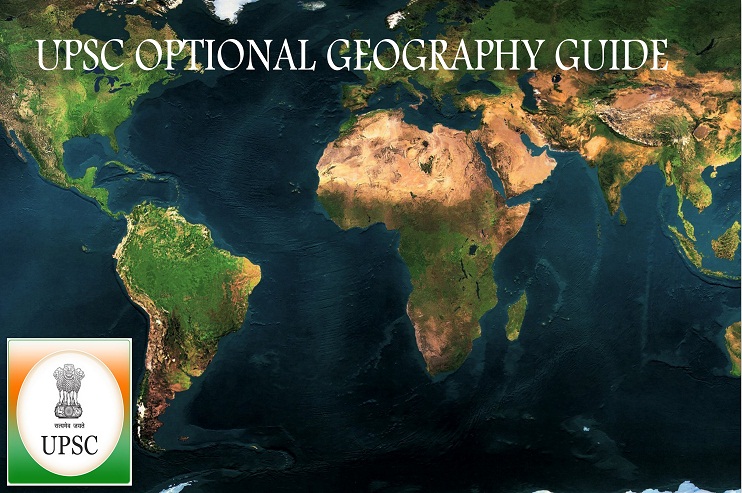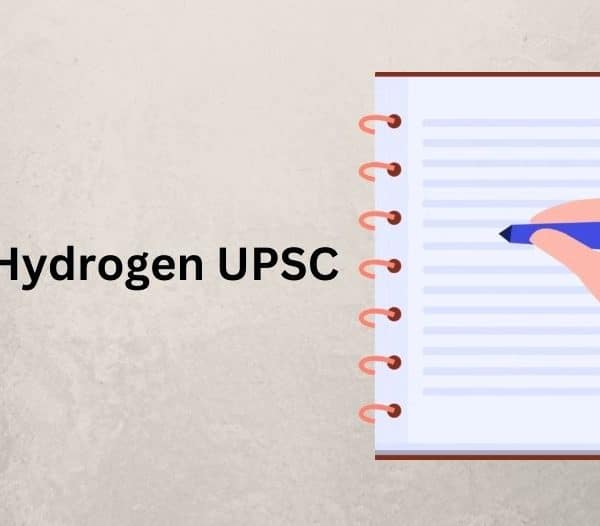Every year the UPSC holds the Civil service exams to recruit civil servants. This examination is conducted in three steps: the CSATs or the prelims, the MAINS and the final Interview. Papers V & VI of the Mains are based on the optional subjects chosen by the student. UPSC provides a wide array of optional subjects including subjects like mechanical engineering, chemistry, botany, zoology, geography, etc.
For those who intend to choose geography as the optional subject, this comprehensive guide covers everything you need to know.
1. Why choose Geography?
A large part of the Geography syllabus is in common with the syllabus of GS paper I & IV of the preliminary exams, especially GS paper I. Therefore studying Geography helps prepare for the prelims and the mains simultaneously.
Since Geography is a commonly chosen subject, good books and materials are readily available in the market as well as good guidance. Also, Geography as a subject is very relevant to a civil servant. Since the syllabus covers a broad aspect and not just physical geography it helps in all-around understanding of the country and its problems and development of the mind.
Also Read: 6 Best Optional Subjects in UPSC: Guide to Choose Most Scoring Non-technical Subjects
2. The Syllabus (main topics):
Paper 1
Physical Geography:
- a) Climatology
- b) Oceanography
- c) Geomorphology
- d) Environmental Geography
- e) Biogeography
Human Geography:
- a) Perspective in Human Geography
- b) Population and Settlement Geography
- c) Economic Geography
- d) Environmental Geography
- e) Biogeography
Paper 2
Indian Geography:
- a) Resources
- b) Population and Settlement Geography
- c) Physical Setting
- d) Agriculture
- e) Transport Communication and Trade
- f) Industries and their Evolution
- g) Settlements
- h) Cultural Setting
- i) Contemporary issues
- j) Political Aspects
3. Concise Booklist
For Physical Geography:
For Physical Geography usually Savindra Singh’s book on Physical Geography is enough. However, since last year the questions have changed a little and more detailed questions were asked on Geomorphology. Therefore, it is suggested that student’s read Savindra Singh’s book dedicated to Geomorphology.
This is a very dynamic subject and day-to-day affairs of the world are important here. Therefore watching the news and reading reports by UNESCO is also recommended to bring that extra and efficient edge to the answer.
For Human Geography:
The Human Geography part also covers a philosophical aspect. This philosophical aspect can be well studied in books by Majid Hussain and Sudipta Adhikary. There is no need to study both books, students may choose the book with whose language they feel more comfortable.
For the Population Geography part again, Majid Hussain’s book should do the trick and for Economic Geography the book on physical Geography by Rupa Publication is recommended. Majid Hussain books should cover most topics.
For Indian Geography:
Books by Khullar and Majid Hussain are enough for Indian Geography. This too is a dynamic portion of the syllabus and requires the student to stay up-to-date with the current affairs so that they are able to relate it to the static part of the subject.
For Map:
Students have to attend one compulsory map question. The Oxford Atlas is recommended for studying map pointing.
Also Read: Recent GI Tags in India 2020: Current Affairs Booster for UPSC Exam Preparations
4. Study plan, Tips and Strategies
The Optional paper for Geography generally has 3 types of questions: Direct Questions (e.g.: Difference between Tropical Cyclone and Temperate Cyclone), Open-ended Questions and Map Questions. There is a certain strategy to attempt each type of question.
Strategy for direct ended questions:
Most examinees will write a similar answer to the direct questions. Therefore to gain an edge over the others one must make the answer appealing. To appeal to the examiner neatness is the first criterion then comes proper drawing of lines to mark the difference.
Along with this the answer should cover as many dimensions of the question as possible and always insert a diagram if possible. Present the answer with the presentation of a geographer. This gives an answer an extra edge over thousands of similar answers.
Practice Tips:
Practice a diagram for each answer that you prepare or try to give a diagram once between every 3-4 questions. A diagrammatic presentation is extremely important in Geography.
Strategy for open ended Questions:
Open ended questions give the answer a lot of freedom so the student should cover as many dimensions possible. They should add map drawings or locations, mention the positive and negative of the given topic and other such details.
Also since examinees have to learn the population theory in Human Geography, they can apply it to the present situation of the Indian population and prepare such smart answers.
Practice Tips:
Keep informed with the current affairs so that it can add to the dimension of the answer and give an application based outlook to the overall answer.
Strategy for Map:
Practice the map pointing questions that came in the last 20 years. Analyse the importance of each place that you mark categorically. It may be a place of historical importance, it may be famous for national marks, it may have important minerals, it may be important from an environmental point of view and so on. Make sure to know the importance of the places.
Practice Tips:
Make a list of the previous 20-year map pointing questions. Divide the list and practice a little daily. Refer to the Oxford Atlas.
5. Some Essential Tips for the Exam
- Presentation is extremely important. Most students will be writing from the same sources so presentation is important. The answer should be crisp, concise and directly related to the question. Do not write answers that are too big or contain large unnecessary portions.
- Read interviews and blogs of previous Toppers.
- Always remember to divide the answer into an introduction, a body and a conclusion.
- It is suggested that students underline the important points.
- It is an important presentation tip by toppers to draw the diagrams in pencil but to label the diagram with black ink pen while maintaining an overall neatness in the drawing.
- Try to practise as many diagrams as possible and attach diagrams to as many questions as possible. A Geography answer is always made better with a diagram.
- Do not try to study all the books in depth. Study only the specific sub-headings mentioned in the official syllabus booklet.
- Solve previous 10-20 years questions.
Also, good guidance is always an important tip. You will find just that in our UPSC PATHSHALA. For the Geography optional subject, we provide videos, practice questions, mapping points, previous year question papers and also a diagram bank. Feel free to refer.
Geography, as we know, is called “The Mother of all Sciences” and is, therefore very important from the UPSC Perspective and relevant in our day-to-day lives.
Also Read: What are Endogenic and Exogenic Forces? IAS Geography Notes






This blog was very helpful on getting on what to choose as the optional subject and signifies why should we choose geography, can you also clarify the same thing with public admninstration also?